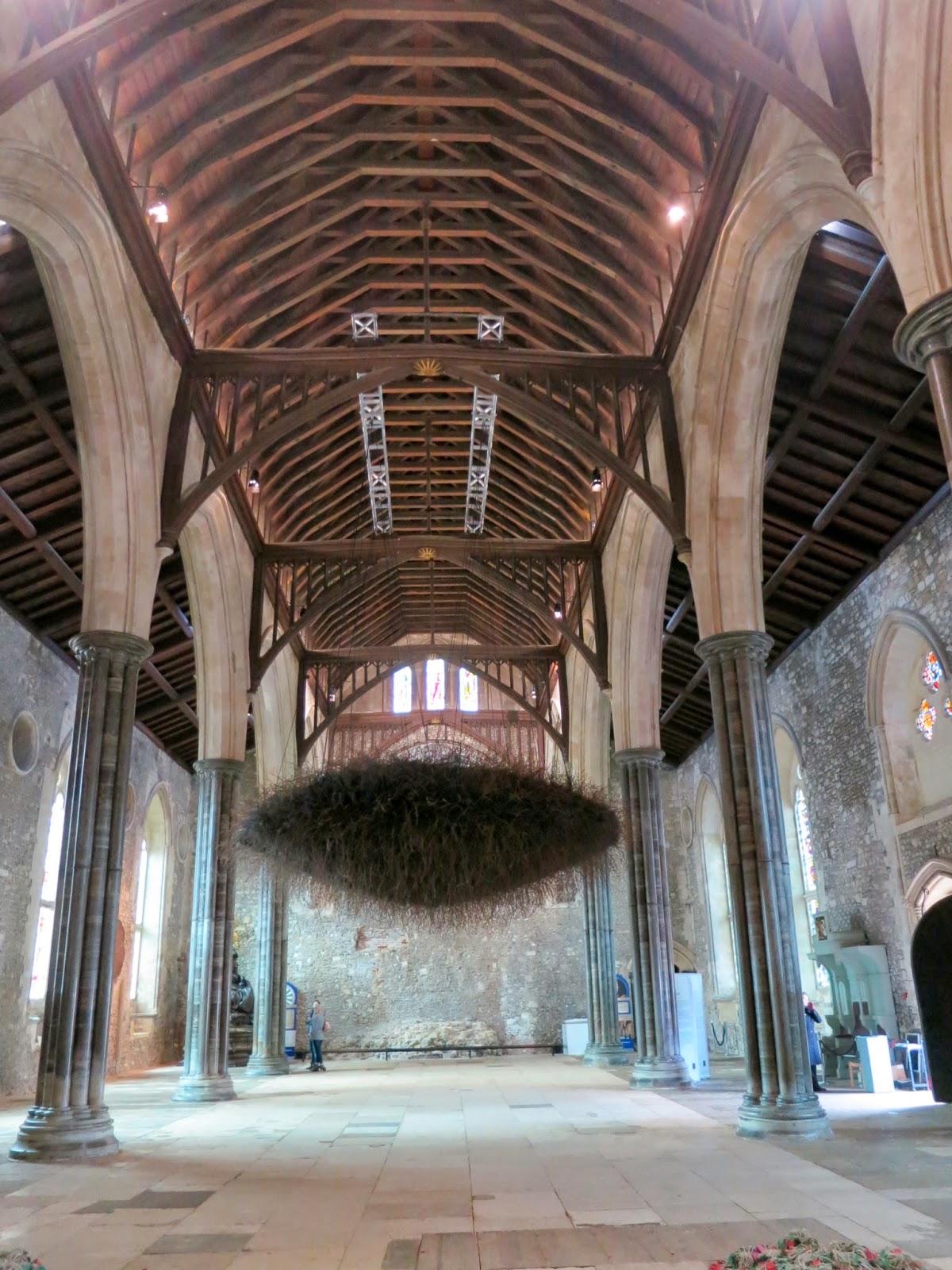William the Conqueror began to build Winchester castle in 1067, within six months of the battle of Hastings. It was built when the English Gothic style of architecture was at the height of its popularity. Its key features include the pointed arch, rib vaulted ceiling, lancet windows and window tracery.
When Renaissance architecture became popular in Florence in the 15th century, the Gothic style was heavily criticised and rejected in favour of a return to classical Greek and Roman forms. In 1682 Christopher Wren created a classical design for a new castle in Winchester. The king's house was designed in the style of the Palace of Versailles.
These buildings offer a glimpse of the grandeur of the castle and Winchester's past glories
Unfortunately I neglected to write down information about this bench, but it obviously commemorates the fallen during WWI
looking closer
This passageway in the basement of the tower led out to the great dry moat surrounding the castle offering escape when the castle was besieged.
looking closer
The Great Hall is the only part of the castle that still stands. Built between 1222 and 1235 it was one of the largest and finest in England, and it's the finest of that period to have survived today.
These magnificent wrought steel gates were installed in 1983 in the arches leading to the judges' gallery to commemorate the wedding of Charles Windsor and Diana Spencer.
Commemorating the First World War, Cloud by Susie MacMurray, made out of rusty barbed wire which is ensnared in billows of black butterfly netting. The wire was resurrected from an MOD site in Aldershot.

Looking closer.
The installation on the floor is part of Cloud, consisting of identity tags and includes the names of all The Royal Hampshire Regiment personnel who died during service from the First World War through to 1992 - 10.224 names.
King Arthur's Round Table hangs on the wall. The table has been dated from tree ring evidence and carbon, to the 13th or early 14th century. It measures 5.5 m in diameter and weighs 1,200 kg and was probably constructed within the Hall. Initially it was a standing table with 12 outer legs and a central support; it was probably first hung on the wall in 1348.
It was not until 1516 that the table was painted, with the red and white Tudor rose surmounted by King Arthur on his throne, bearing a striking resemblance to the young Henry VIII. The names of 24 of the Knights of the Round Table are written around the edge.
The garden, named after Queen Eleanor of Provence.













You certainly covered a great deal of Winchester in your stay. I have been lucky enough to see it all in my short visits over many years. Having said that I had not been there for years, I ended up in the place twice in one week - last night we were diverted through Winchester off the M3 on our way home from a concert in Southampton! It was a lovely clear night with hardly any traffic, and I enjoyed being a passenger and thus able to look around me at the architecture as we passed.
ReplyDeleteI guess we did, Olga - we certainly felt we knew the place by the time we left. Hope you enjoyed the concert.
Delete